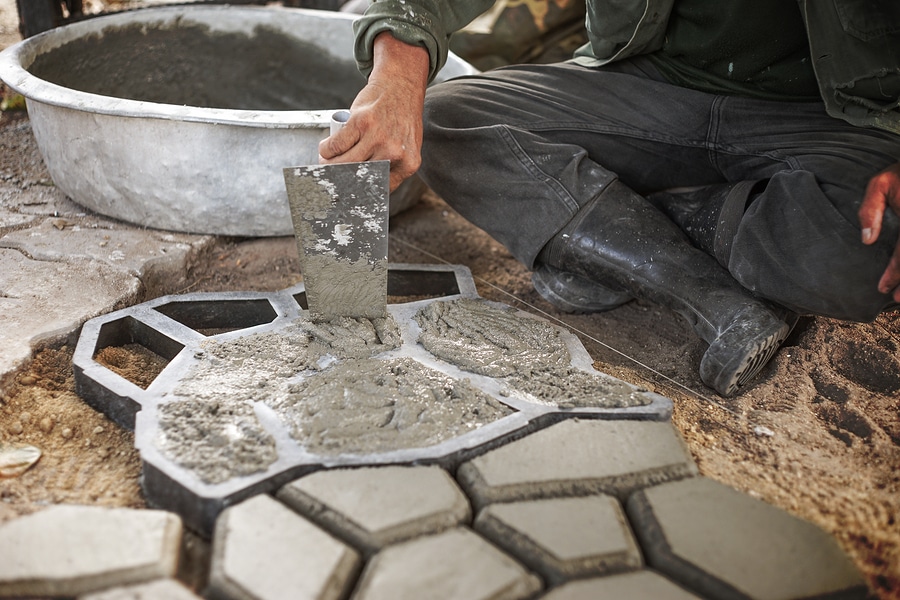The different materials used in block retaining wall installation

At first glance, a block retaining wall is just there to hold back a whole lot of dirt but these walls are incredibly versatile and are used in everything from college campus commons areas to office building landscaping accents to park benches and planters.
Retaining walls can stay true to their eons-old construction purpose or be built with pizazz to add a touch of drama to a blank canvas backyard. All retaining walls have their own nuances and personality, and variations in construction techniques, or even the crew involved, has an impact on the final product.
Material choice is also of course one of the main considerations when planning a block retaining wall project for your Sioux Center or Rock Valley, Iowa home. However, you first have to decide on the purpose of the wall, the look you want, and your budget. Retaining wall construction materials come in a variety of shape, sizes, colors, and availability. Here are some of the most commonly used, along with their benefits and drawback
Concrete block
What’s great about it?
Concrete block is one of the most popular retaining wall material choices, especially with the widespread use of interlocking blocks. The material is widely available, affordable, and straightforward to install. Excellent style versatility including Spanish style and mid-century
Negatives
Typical concrete block walls cannot be built more than 4 feet high. Without footings, the wall’s long-term strength may be affected. Blocks may crack and are susceptible to salt deterioration from deicing products.
Poured concrete
What’s great about it?
Poured concrete is strong and versatile, with sleek aesthetics that look great in modest retaining walls or enormous commercial projects.
Negatives
Poured concrete walls require considerable skill, in establishing forms, footings, and any rebar skeletons. Poured concrete also absorbs moisture, which can lead to cracking or structural failure.
Brick
What’s great about it?
Brick is one of the most durable retaining wall material and is an attractive complement to home design. Modern brick material is generally eco-friendly, weather resistant, and durable.
Negatives
This is very rarely solid brick material; rather, it is a blend of concrete masonry or various insert overlaid with brick veneer. Color variety is limited, brick is labor intensive, and additional focus is required for drainage.
Stone veneer
What’s great about it?
Stone veneer has a luxurious look, with versatility and nearly no end to options for wall height, thickness, and patterns. Stone veneer is designed to encase a solid core such as masonry, and is very tough, light weight, and weather resistant.
Negatives
Constructing a stone veneer wall takes an experienced eye and savvy design skills of a seasoned landscaper, and involves a higher investment of labor time.
Natural stone
What’s great about it?
Highly versatile in regard to size, pattern, and texture; natural stone also offers endless design options to create the perfect outdoor hardscape setting. Stone walls don’t require mortar or other bonding materials and it adds elegant beauty to a property’s natural surroundings.
Negatives
Natural stone walls are not easy to build, so plan on enlisting the help of a pro contractor. Stone is also heavy and it’s like putting together a puzzle, which can be frustrating at times. Natural stone’s beauty and durability also commands a steeper price.
For more information on retaining wall construction materials, contact Outdoor Elements today at (712) 476-5299 or outdoorelementsinc.com.